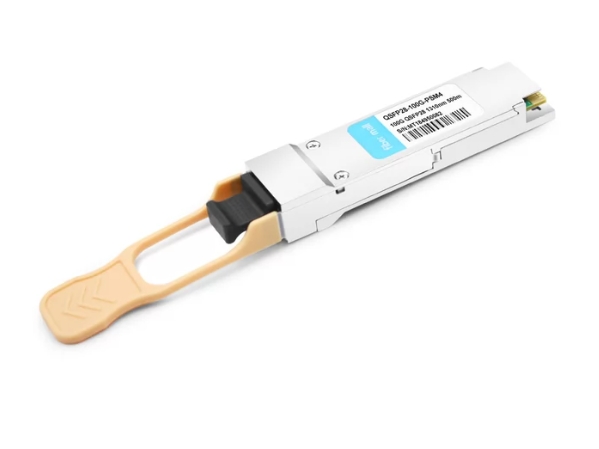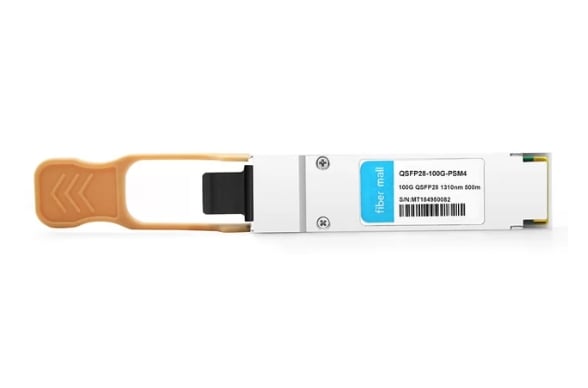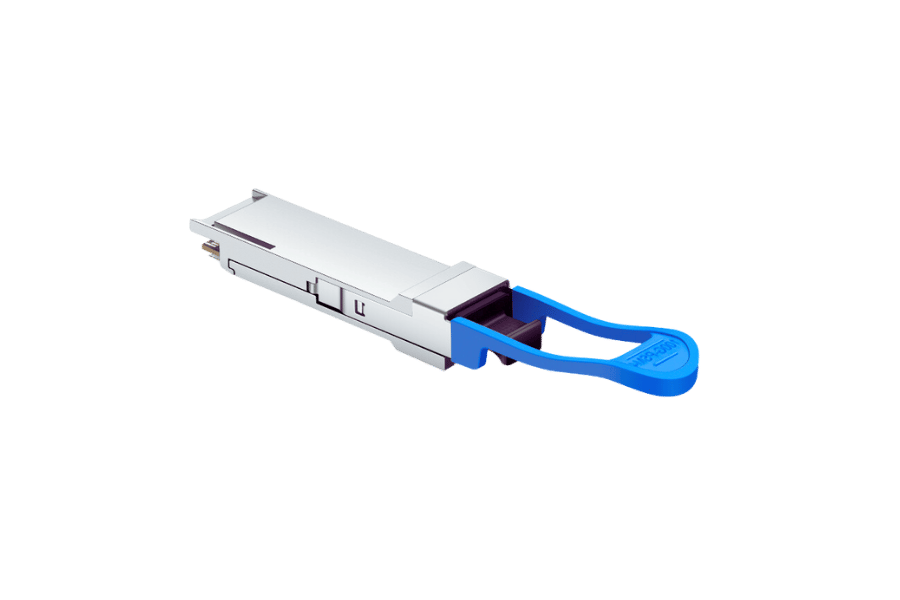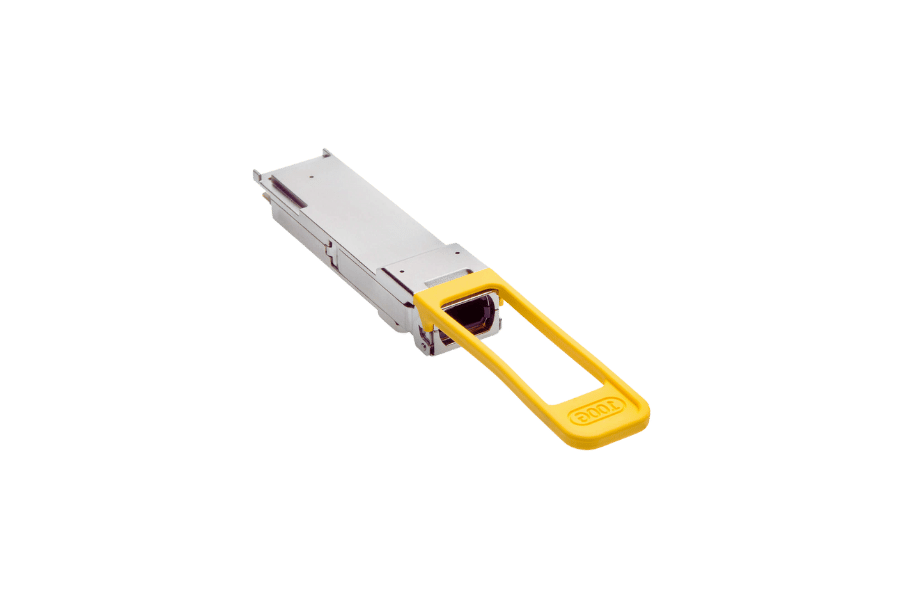The constant evolution of data communication has sped up the search for more bandwidth and better networking solutions, which has led to major improvements in optical transceiver technology. Among these inventions is the 100G PSM4 QSFP28 optical transceiver, which has become a critical part of meeting modern data centers’ and enterprise networks’ demands. This blog gives an all-inclusive description of what 100G PSM4 technology is about, especially how it works, its benefits as well as the importance of 1310nm MPO connectivity. Readers will be able to know how this technology improves connections, enables strong data transmission and increases efficiency in high-speed network infrastructure by looking into these issues.
Table of Contents
ToggleWhat is a PSM4 Transceiver, and How Does It Work?
Understanding PSM4 Technology
The PSM4 (Parallel Single Mode 4) transceiver uses four parallel single-mode fibers to send data at the same time, which allows for high data transfer rates. This device meets the standards of 100GBASE-PSM4, ensuring it can be used with different platforms and devices. The wavelength of PSM4 is 1310 nm, which helps send information over distances up to 500 meters with very little signal loss. Its important features include low power consumption, less delay in communication, and easier network structure because it applies passive optical networking principles. All these factors make PSM4 technology perfect for contemporary data centers as well as enterprise network settings.
How Does a PSM4 Optical Transceiver Function?
By converting electrical signals into optical ones for transmission through fiber optic cables — and vice versa — a PSM4 optical transceiver works. A separate laser is used by each transmit/receive channel found in this type of transceiver module that operates on dedicated single-mode fiber channels. These SMF optical transceiver modules significantly enhance network performance. The lasers emit light pulses that correspond to bits of data, which are picked up by photodetectors at the other end of the fiber when triggered by the transceiver itself. Four fibers are used simultaneously during this process, allowing an aggregate throughput speed of up to one hundred gigabits per second (100 Gbps). With advanced modulation techniques implemented along with high-efficiency components utilized throughout its construction, reliable connectivity suitable even for applications requiring heavy use such as cloud computing will be provided by our innovative design solution – namely: PSW-MF1A-XP series modulators from JDSU/Uniphase Corporation, etc., which have been tested successfully under various conditions including extreme temperatures (-40°C ~ +85°C).
Prominent Features of PSM4 QSFP28 Transceivers
- High-Robustness: Built to withstand the rigors of data center environments, ensuring reliability and longevity in performance. Here are some other features that make PSM4 QSFP28 transceivers suitable for high networking environments:
- Compact Form Factor: Standardized form factor of cisco qsfp-100g-psm4-s compatible 100gbase-psm4 qsfp28 transceivers. The QSFP28 design minimizes space requirements while facilitating easy integration into existing systems.
- Compatibility: Devices such as the compatible 100gbase-psm4 qsfp28 modules provide flexibility in deployment by interoperating with existing 100G networks and infrastructure.
- Extended Range: Utilizing a wavelength of 1310 nm for optimal performance, it is built for distances up to 500 meters over single-mode fiber..
- Low Power Consumption Rates – For instance, these eco-friendly options consume less energy, making them ideal for data centers where there is a need to conserve power usage costs.
- Quick Data Transmission & Reception Architecture – This feature is essential for real time applications because it promotes speedy transfer processes between devices connected within one network or across different networks at any given moment in time regardless whether they are located close together or far apart from each other geographically speaking.
What Are the Key Specifications of 100G PSM4 Optics?

Technical Specifications of 100G PSM4 Transceivers
- Data Rate: 100 Gbps
- Wavelength: 1310 nm
- Distance: Up to 500 meters over single-mode fiber
- Connector Type: MPO-12
- Operating Temperature: 0°C to 70°C (standard)
- Power Consumption: Optimized power usage for 1310nm 500m dom transceivers is critical.: Typically < 3.5 W
- Transmitter Type: Distributed Feedback (DFB) Laser
- Receiver Type: PIN Photodetector
- Protocol Support: 100GBASE-PSM4 and OTN
- Compliance: IEEE 802.3bm and MSA compliant
1310nm Wavelength and Its Significance
Due to its low attenuation and minimal dispersion, the 1310 nm wavelength is important in optical communication. It is used for long-haul transmission of signals through single-mode fibers. It can carry high data rates without distortion of the signal. Additionally, this wavelength has less attenuation which increases its reach overall and enhances performance in data centers where fast applications are important. In particular, 1310nm 500m dom transceivers work best because they have been designed to match up closely with their wave properties. Moreover, other features like support for different network protocols make them more preferable among many modern optical networking solutions, such as those compliant with 100g psm4 specification devices.
How Do Different Devices Work with PSM4 Compatibility?

Cisco Equipment’s PSM4 Compatibility
A variety of Cisco switches and routers that have 100G QSFP28 ports can use PSM4 transceivers. This enables the easy merging of PSM4 optics into current Cisco networking frameworks which guarantees effective short-distance communication. The interoperability is backed by industry standardization like IEEE 802.3bm, which governs the modules used in such equipment, hence allowing operators to apply this technology without making many changes to their infrastructure. In addition, software settings within these devices allow for automatic recognition as well as optimization of their functions.
Ensuring Matching with 100G QSFP28 Optical Transceivers
Before using any network device with a 100Gbps QSFP28 optical transceiver, it is important to ascertain if it has met all requirements set out in IEEE802 standards, particularly section .3bm. It would also be wise to confirm whether or not they are Multi-Source Agreement (MSA) compliant for use in high-speed applications among other things, including checking firmware versions since some updates improve compatibility while others do not affect performance at all so long as you’re still running an appropriate version that works fine under normal circumstances where no significant changes have been made recently besides possibly minor tweaks here-and-there just because someone felt like trying something different one day but then again maybe not who knows? Also worth mentioning are cabling systems, which should comply fully too; otherwise, data transmission will suffer due to lack thereof, causing signal losses along the way, leading towards eventual failure even though everything else appeared perfect up until the point where cables came into play because they were overlooked during initial evaluation process when determining suitability levels among various components involved throughout entire setup from beginning till end!
What Are the Advantages of PSM4 for Data Centers?
PSM4 Transceivers for High-Speed Data Transfer
In high-speed data transfer, especially within data centers, PSM4 transceivers have many advantages. First and foremost, they create a dense connection while consuming less energy than other optical solutions. By using parallel optical technology, these devices allow efficient transmission over short distances of up to 500 meters with multimode fiber. These optical transceiver modules are essential in guaranteeing rapid data movement. This design not only maximizes bandwidth utilization but also minimizes overall infrastructure costs related to cabling and installation. Moreover, a variety of network equipment can work together with PSM4 modules which means that these systems can be easily integrated into pre-existing ones without major upgrades.
Benefits of Low-Cost PSM4 Solutions
Cost-effective PSM4 solutions provide substantial savings at no expense on performance level. Their efficient design, coupled with compatibility with current systems, lowers total capital spending associated with wiring and appliances. Also further improving cost-effectiveness are decreased installation labor costs due to ease involved in deployment processes. Additionally, the reliable performance offered by PSM4 transceivers ensures stable transfer rates thus minimizing chances of network disruption incidents occurring frequently over time periods when more users connect to networks served by such devices whose maximum capacity has been exceeded under normal circumstances where only few users connected were accessing resources concurrently through them since their initial deployment until now as data centers grow larger or smaller based on demand patterns observed across different seasons during any calendar year regardless whether it is winter spring summer fall autumn etc., therefore becoming increasingly viable long-term investments due its scalability feature alone among other reasons listed above here but not limited too because so many others exist equally valid reasons why one should choose this particular type model instead another type model available in the market today but still none beats this particular brand name because it is made using high-quality materials which last longer than cheap imitations sold elsewhere cheaply just like everything else dear reader always remember if you want something good then prepare yourself financially otherwise don’t bother buying anything at all!
Selecting the Best PSM4 Module for Your Needs

Compare Different 100G PSM4 Modules
Here are some things to think about when choosing a 100G PSM4 module:
- Compatibility: The module must match your existing network equipment, such as switches and routers.
- Distance Requirements: Evaluate transmission distances. Typically, multimode fiber supports up to 500 meters with PSM4 modules. A qsfp28 100gbase-psm4 may extend this distance.
- Power Consumption: Look at the power consumption specifications of different modules and choose energy-efficient options that fit your operational goals.
- Form Factor: Check physical dimensions and form factor so it can be installed properly in your network infrastructure.
- Cost: To find the most cost-effective solution, examine total ownership costs, including purchase price, installation, and maintenance expenses.
- Performance Metrics: Ensure the selected module meets performance requirements by reviewing parameters like data transfer rates or error rates.
Factors to consider when choosing a PSM4 Optical Transceiver
- Compatibility: To prevent integration problems, check whether the module works with existing network devices.
- Distance Requirements: Identify the maximum transmission distance that your specific application needs.
- Power Consumption: Choose modules that consume less power to improve energy efficiency and minimize operating costs.
- Form Factor: Make sure the transceiver fits properly into your current hardware configurations.
- Cost: Assess total cost by looking at not only initial price but long-term operational expenses as well.
- Performance Metrics: For optimal performance, select modules that meet or exceed required data transfer and error rate specifications.
Comparing PSM4 and CWDM4 Transceivers
When comparing PSM4 (Parallel Single Mode 4) with CWDM4 (Coarse Wavelength Division Multiplexing), there are several key technical differences. Firstly, PSM4 is designed for short-reach applications, typically supporting transmissions up to 500 meters using multi-mode fiber, while CWDM can transmit over longer distances, generally about two kilometers, using single-mode fiber.
In terms of its power requirements, PSM has lower consumption, which enhances energy efficiency compared to other types like CWDM, which increases capacity through multiple wavelengths, hence consuming more sometimes. Again they differ in their form factors where SC duplex connectors are used mostly by CWDMS while MTP/MPO connectors are mostly used by PSMS. Finally, although PSMS may be cheaper for sdcwdm applications requiring high bandwidth across long distances due to efficient infrastructure utilization, then choice between these two will depend on specific needs such as distance capacity budget, among others. Considerations must also take into account psm MSA standards for 100g
What is the Function of MSA in PSM4 Specifications?

PSM4 MSA Standards Explained
The PSM4 MSA (Multi-Source Agreement) standard lays out how PSM4 transceivers should work and be able to connect with each other, so that different manufacturers can use them. Some key specifications are a maximum distance of 500 meters using multimode fiber, a data rate of 100 Gbps, and an MTP/MPO connector. It also sets power consumption limits to make it more energy efficient. Following these guidelines allows easy integration into current networks, which improves the reliability and performance of high-speed data communications.
MSA Compliance for 100G PSM4 Transceivers
In order to comply with the multi-source agreement (MSA) for 100G PSM4 transceivers, there must be defined operational specifications adhered to, such as multimode fiber maximum reach of five hundred meters and consistent hundred gigabits per second data transmission speed requirements. Additionally this includes forcing the use of specific types like MTP/MPO connectors along with pre-established thresholds on power usage intended to increase efficiency in terms energizing devices connected through them thereby reducing their overall power costs further down line when used together over time consistently enough periods at least months annually every year after all installed initially once done right first try without mistake anywhere else ever again forevermore until death do us part whichever comes first between me you or both us at same time simultaneously one after another sequentially until infinity never ends always going round circles forever never stopping crying laughing love peace happiness joy togetherness unity harmony kindness generosity selflessness compassion empathy understanding respect trust loyalty friendship brotherhood sisterhood mankind humanity love Earth nature animals plants everything living thing creation creativity art music dance poetry literature philosophy science technology innovation invention discovery exploration adventure fun play laughter smiles hugs kisses holding hands cuddling snuggling spooning kissing sweetly softly gently tenderly passionately deeply madly truly madly deeply eternally unconditionally infinitely soulmates twin flames kindred spirits best friends lovers partners teammates co-captains co-pilots adventurers explorers innovators creators artists musicians dancers poets writers philosophers scientists technologists inventors discoverers explorers adventurers fun lovers smile givers hug takers kiss stealers cuddlemates snuggle buddies spooning partners sweet kissers soft kissers gentle kissers passionate kissers deep kissers madly in love with each other forever always till death do us part whichever comes first between me you or both us at same time simultaneously one after another sequentially until infinity never ends always going round circles forever never stopping crying laughing love peace happiness joy togetherness unity harmony kindness generosity selflessness compassion empathy understanding respect trust loyalty friendship brotherhood sisterhood mankind humanity love Earth nature animals plants everything living thing creation creativity art music dance poetry literature philosophy science technology innovation invention discovery exploration adventure fun play laughter smiles hugs kisses holding hands cuddling snuggling spooning kissing sweetly softly gently tenderly passionately deeply madly truly madly deeply eternally unconditionally infinitely soulmates twin flames kindred spirits best friends lovers partners teammates co-captains co-pilots.
Advantages Of Msa In Optical Interconnects
There are several major advantages to implementing MSA within optical interconnects firstly, it guarantees compatibility between different manufacturers, thus making system integration easier while minimizing compatibility problems secondly, MSA compliance encourages component standardization leading to cost savings as well as increasing product availability among competitors thirdly, adherence to power consumption criteria boosts energy efficiency which lowers operating expenses fourth but not least consistent application of MSA standards facilitates achievement high performance reliable data transmission critical meeting modern high speed network demands.
Reference Sources
Frequently Asked Questions (FAQs)
Q: What is the fundamental technology behind 100G PSM4 QSFP28 optical transceivers?
A: Silicon photonics, which allows for high-speed data transfer using 1310nm MPO connections, is the main technology used in 100G PSM4 QSFP28 optical transceivers.
Q: How far can a 100G PSM4 QSFP28 optical transceiver reach at its maximum?
A: A single-mode fiber (SMF) typically has a maximum reach of up to 500 meters with a 100G PSM4 QSFP28 optical transceiver. However, some models may support distances of up to 2 kilometers.
Q: What are the key features of a 100G PSM4 QSFP28 transceiver?
A: A 100G PSM4 QSFP28 transceiver supports Ethernet at speeds of up to one hundred gigabits per second (Gbps). It is compatible with the standard known as 100GBASE-PSM4 and operates on light waves that have wavelengths around and including but not limited to those at about one thousand three hundred ten nanometers (nm).
Q: How do you differentiate between QSFP28 SR4 and PSM4 Transceivers?
A: The wavelength used by both types differs; while longer-range applications such as those that cover distances ranging from five hundred meters (m) up until two kilometers or so employ devices operating within the range of thirteen hundred nanometers (nm), shorter ones like short-reach S/R modules will work only over small areas due to their design constraints
Q: Can I use my Cisco equipment with these transceivers?
A : Indeed, certain varieties exist specifically designed for compatibility with Cisco devices. For example,the model named “QSFP-100G-PSM4-S” meets all standards required by this type.
Q: What benefits does it provide when upgrading networks using them?
A: These low-cost solutions expand capacity from twenty-five Gbps through one hundred Gb/s while ensuring long-distance coverage and seamless integration into pre-existing network frameworks
Q: Are digital diagnostics supported in them?
A: Yes Yes! In fact, they allow real-time monitoring capabilities so admins can manage how well their new toys are performing
